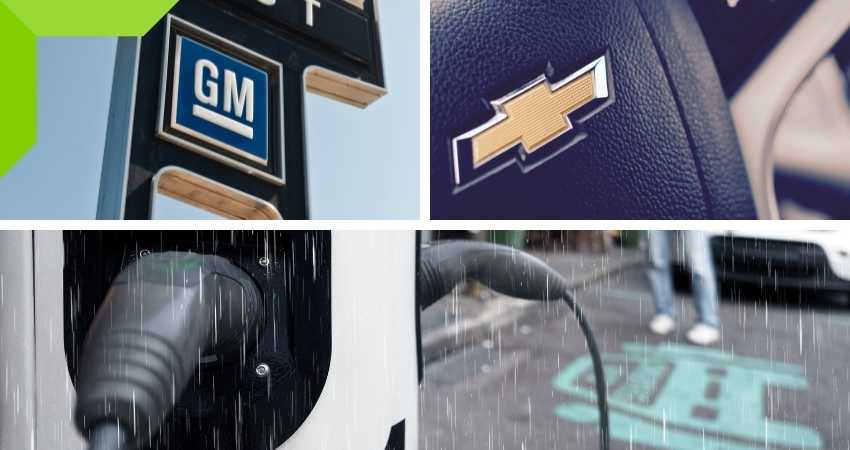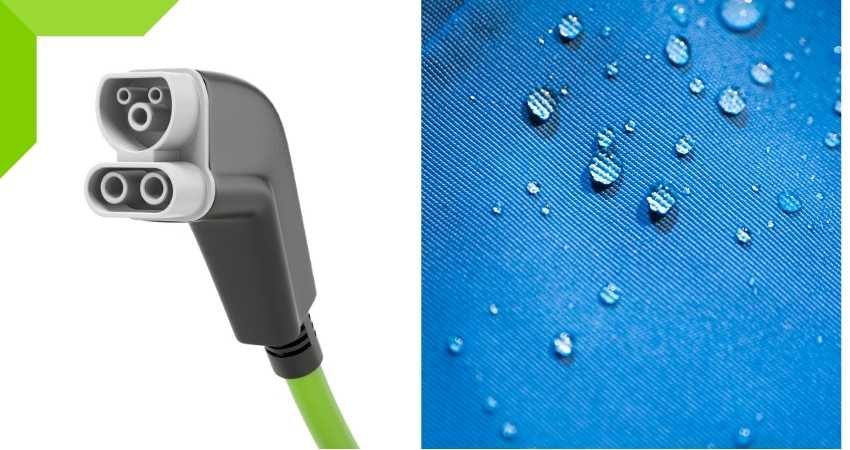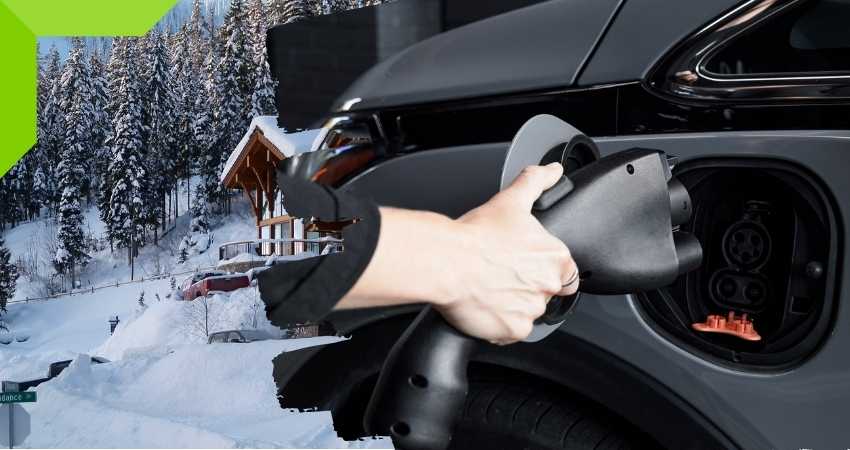In the contemporary world, Electric Vehicles have captivated the automotive market. With each day, EVs are progressively gaining popularity among the car community. So it’s a no-brainer that all the aspiring companies in the industry introduce an electric-powered vehicle. Well, the masterminds behind Chevrolet came up with the same master plan.
The Chevy Bolt is a battery electric subcompact hatchback made under the Chevrolet marque. It made its way into the dealerships in 2016.
Every novelty introduced in the market has to face an assortment of questions regarding its integrity. Since the release of the Chevy Bolt, a question has surfaced: Can you charge the Bolt when it’s pouring outside? It might be of grave concern to an average man like you and me, especially in the era of wheels where cars have become indispensable.

Yes! You can charge your Chevy Bolt in the rain without worrying about anything. The battery, charger, and all other components reach you after strict safety precautions and testing. Chevy chargers are OSHA certified. While charging and driving your Chevy Bolt on a rainy day doesn’t cause any trouble, we recommend you follow the safety precautions discussed in the article below.
Not satisfied with the answer? Then buckle up because you are in for a ride for the rest of the article.
Are Chevy Chargers Safe to Use in the Rain?
It might not seem like a problem if there’s a drizzle outside. Some people might stand by until the Rain subsides. What if the forecast anticipates a downpour that may last for hours or even days? Does your car become useless because you cannot charge your mode of transport? A red flag could result in the crash of the vehicle’s market.
While generally, it might seem like suicide to stand on a wet surface and plug something into an outlet, electric vehicles are built just for that. But this is not the case with the Chevy Bolt. You would expect the designers of the Bolt or any other EV to be general to foresee such flaws in the practicality.

Jonathon Ratliff, Nissan North America’s senior manager for zero-emission technology development, gave an interview. Upon enquiring, he answered, “Absolutely, it’s safe to charge in nearly any weather condition.” “That’s because electric vehicles are purposefully engineered to withstand rain and water intrusion, not to mention pesky dust particles that could wreak havoc on an electric system,” he added.
EV chargers are rigorously tested by OSHA-certified laboratories and meet stringent safety standards set by the Society of Automotive Engineers. Chevy chargers are no exception. Thus, making them safe to use in adverse weather conditions.
But it’s better to be safe than sorry, so let’s dig deep into the measures and precautions taken before doing so.
5 Safety Precautions While Charging Chevy in the Rain

Even though the chargers have built-in safety features, being extra careful won’t hurt anybody.
1. Ensure the Charger Is Fully Secured
It is essential to check that your Chevy charger is secured tightly in the car’s charging slot. It allows proper charging and restrains moisture from infiltrating the Chevy Bolt. It is only an additional measure to be definite that nothing impedes the smooth charging process of the car.
The engineers have already installed waterproofing protocols in the charger to hamper any moisture from disrupting the charging process.
Even though the engineers have done their job remarkably, this can be done for peace of mind.
2. Make Sure the Insulation of the Charger Is Not Damaged
This might sound like a cliché, but it is crucial to ensure that the insulation on the charger is not damaged. The damage could be due to abrasion or storing the charger in places with significant exposure to heat.
Damaged insulation could result in electrocution while handling the charger. Especially in households with children, there is a higher probability of a toddler touching and drooling all over the naked connection.
Every single one of us has experienced a little zap from faulty insulation or an outlet shaking us to the core. No one likes to get shocked, especially out of the blue.
Remember, safety is always the priority.
3. Only Use the Original Charger
Nothing beats the quality and integrity of an original product. Knockoffs or counterfeits could wreak havoc.
Third-party chargers do not undergo proper testing, and the relevant authorities do not approve of them. The waterproofing of the chargers might not be competent enough to keep its guard during a heavy storm.
Original chargers of Chevy go through stringent testing, and Chevrolet approves them after a great ordeal. Other chargers might catch fire or get damaged in the rain. They have no warranty, and your car insurance might not cover them.
They might be cheap but can cost you.
4. Charge Your Car Before-Hand
This doesn’t look like a safety precaution. Does it? But it will seem like a brilliant move by the end of this section of the article.
Heavy rainfall and gushing blows of wind can disrupt the powerlines. The disruption can result in a power outage in your area. During these dark times, what if your Chevy is low on juice?
You might be thinking it is time to call an Uber, right? But a more intelligent move is to charge your car whenever the weather forecasts anticipate a hefty rain.
You don’t need a degree to be street smart.
5. Make Sure the Charger Is Dry When Not in Use
Another cliché. Store the Chevy charger in a dry place that is not vulnerable to water. There are cases available to store these chargers. Buying them might not be a bad investment.
Common sense, right?
Rainwater combines with a plethora of pollutants during its journey. This water can, in turn, expose your Chevy charger or Chevy Bolt to rust damage.
Are Chevy Chargers Waterproof?
As stated above in this article, Chevy chargers undergo various testing. The chargers are installed with multiple safety features that ensure that water doesn’t get to electricity to threaten the user’s electrocution.

This might sound redundant, but the chargers go through trials in OSHA-certified laboratories to meet the required safety standards of the Society of Automotive Engineers. They are subjected to high-pressure water from a fire hose. This is to seal the deal on whether the charger is completely waterproof.
A Chevy Charger is purposefully engineered to withstand water intrusion by using water-proof materials for its construction.
Can You Charge a Chevy in the Snow?
Yes! You can charge your Chevy in snowy weather as well. However, there are some things you need to know while driving and charging Electric vehicles during winters or in snow.

- Cold weather can reduce the range of your car. Electric batteries need to be hot to perform at their maximum performance. During winters, there are fair chances that your EV gives you less mileage than usual.
- Don’t let your charge go below the 20% mark. Your battery drains fast in cold weather, so you must have enough backup to drive back home or to the next charging station.
- Keep your car plugged in till the last minute. Keeping your battery plugged in a little longer before you can give you some extra range on a snowy day.
- Plan the route according to the range of your car. Knowing your route and the location of the nearest charging stations is always a smart move when you’ve to drive in snow.
So it is explicitly made clear that we can charge the Chevy Bolt whether it’s raining cats and dogs or a blizzard suddenly knocks at your door. Weather should be the least of your worries while driving an Electric Vehicle, but being precautious and road smart can save you from any unexpected hassles.


